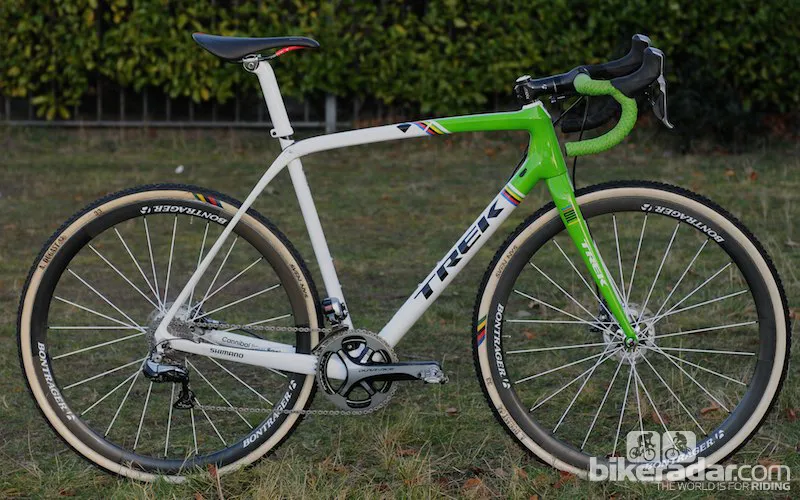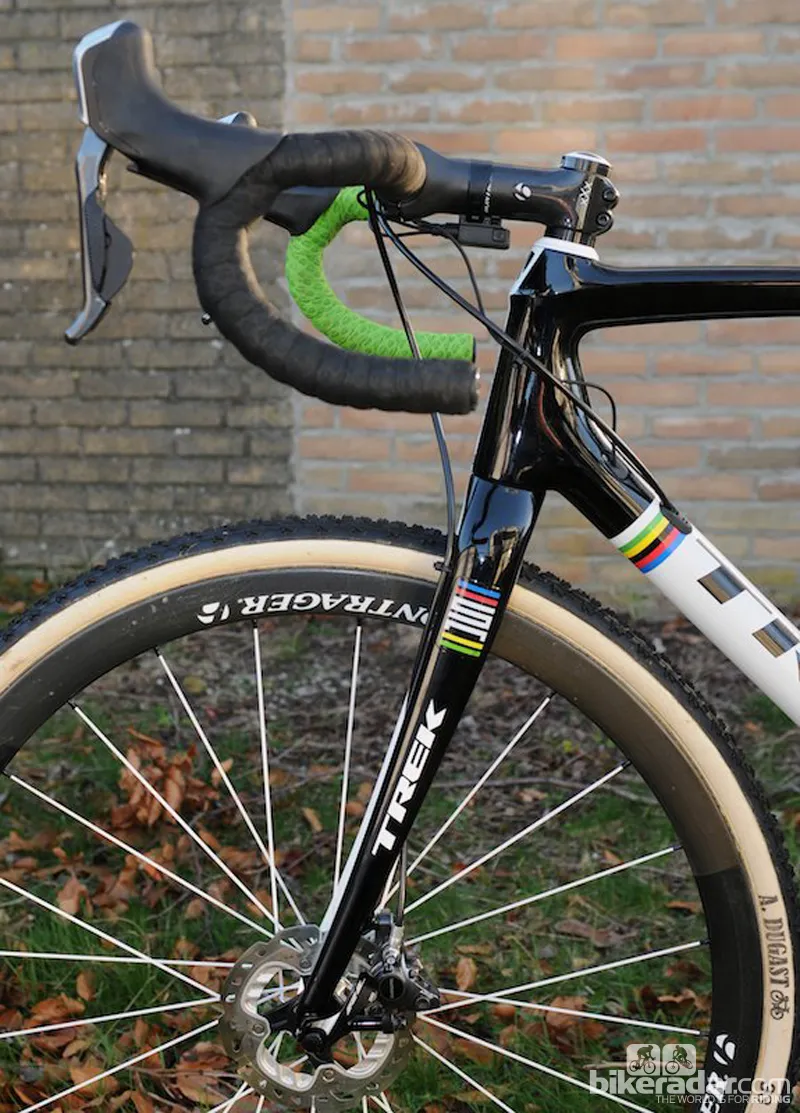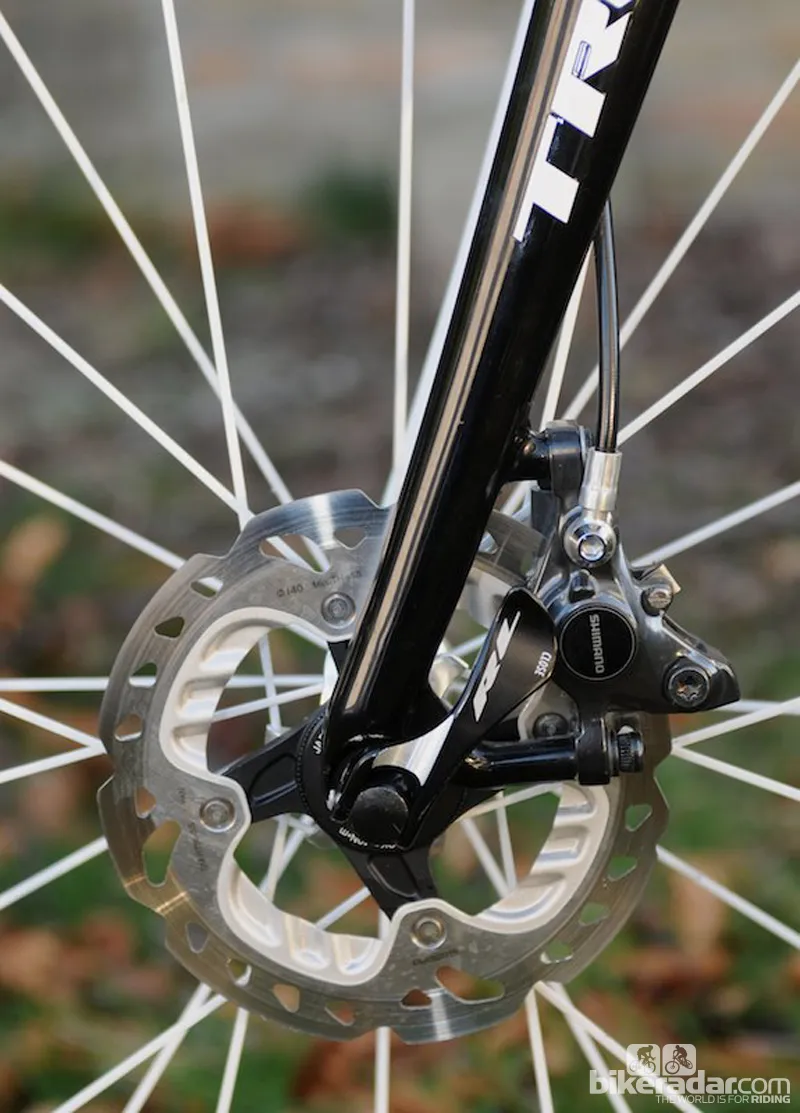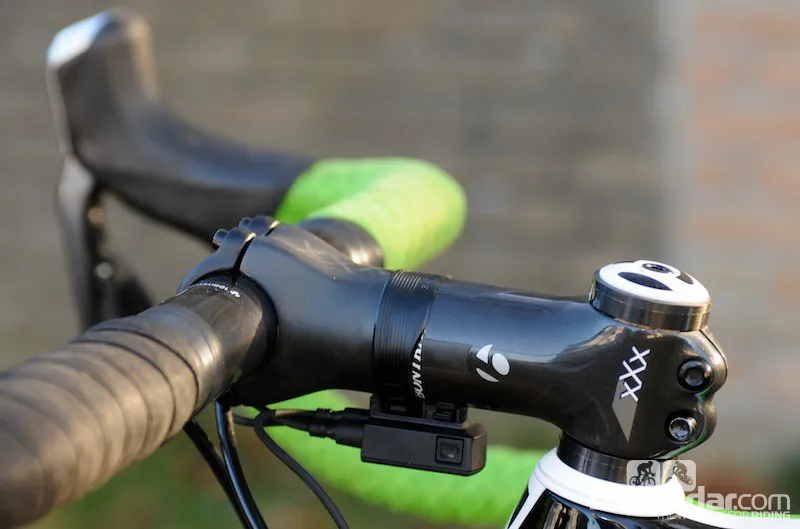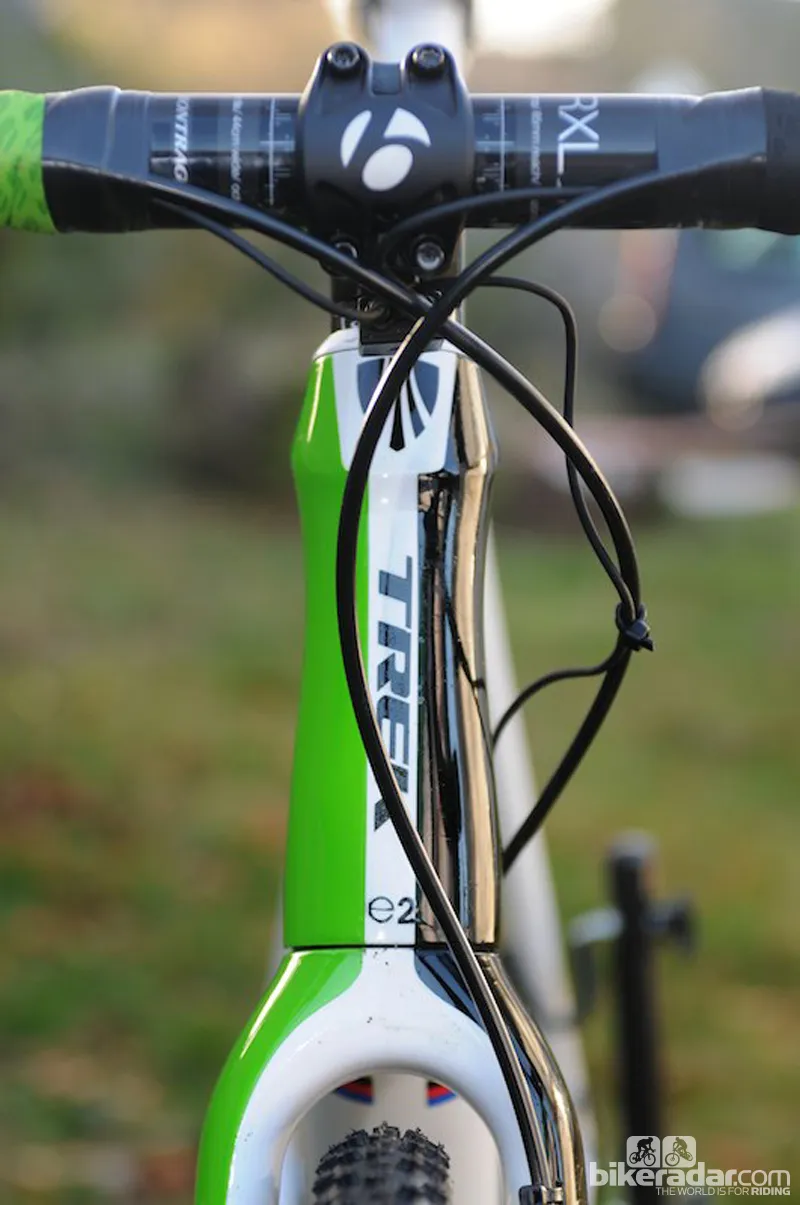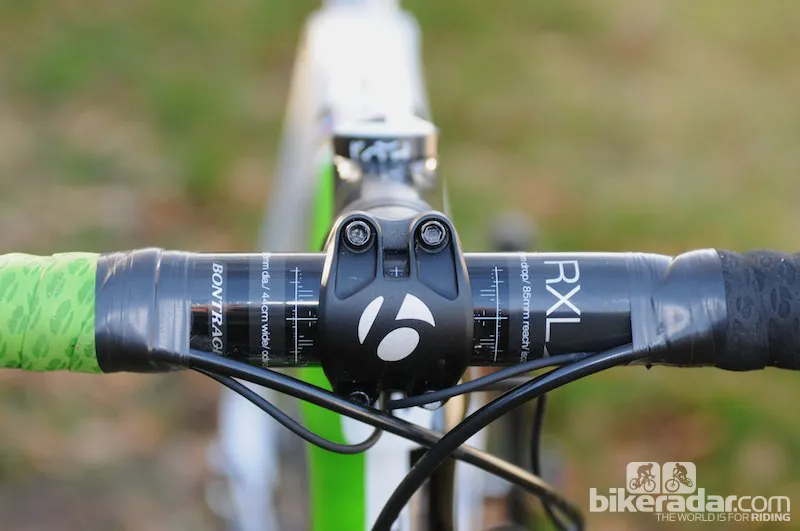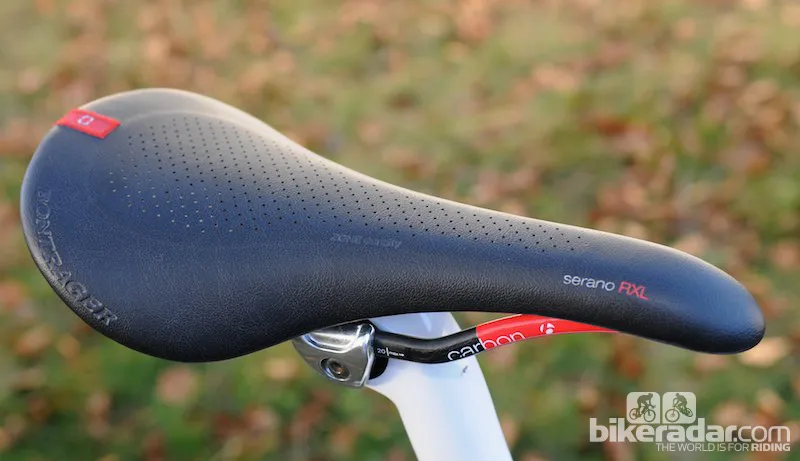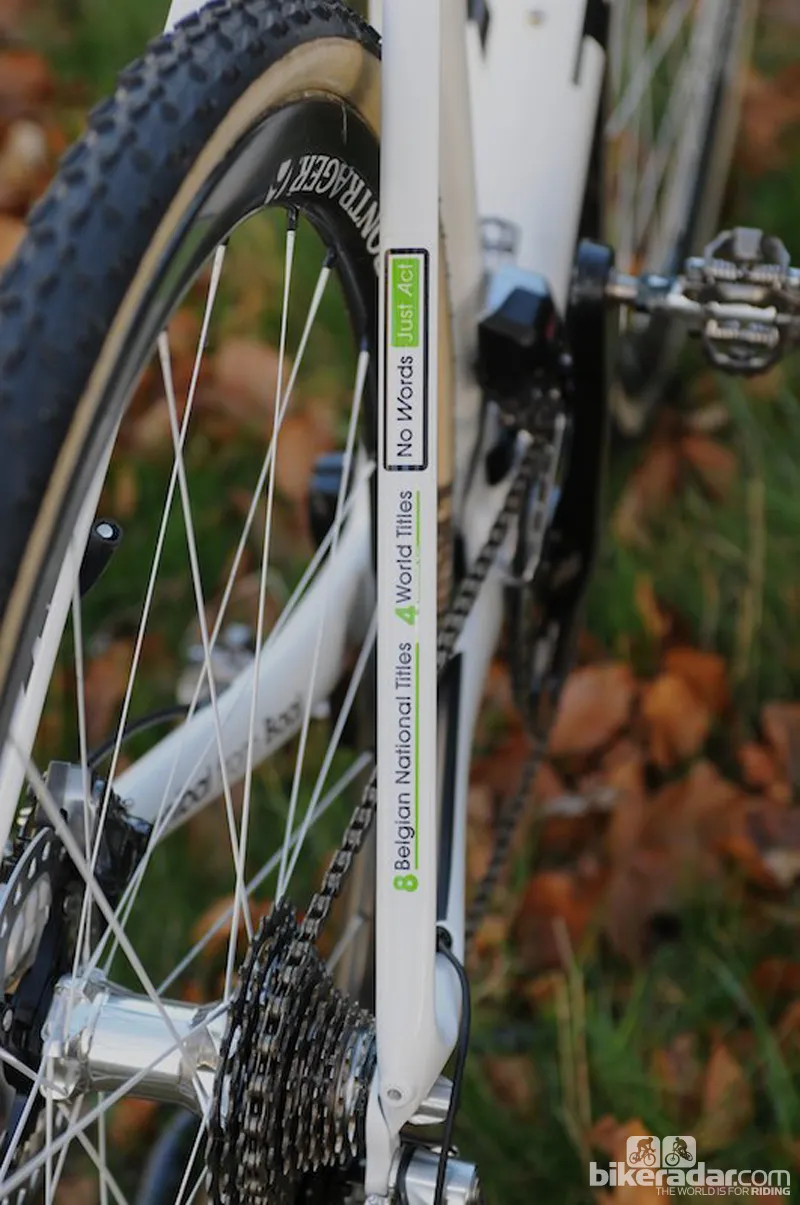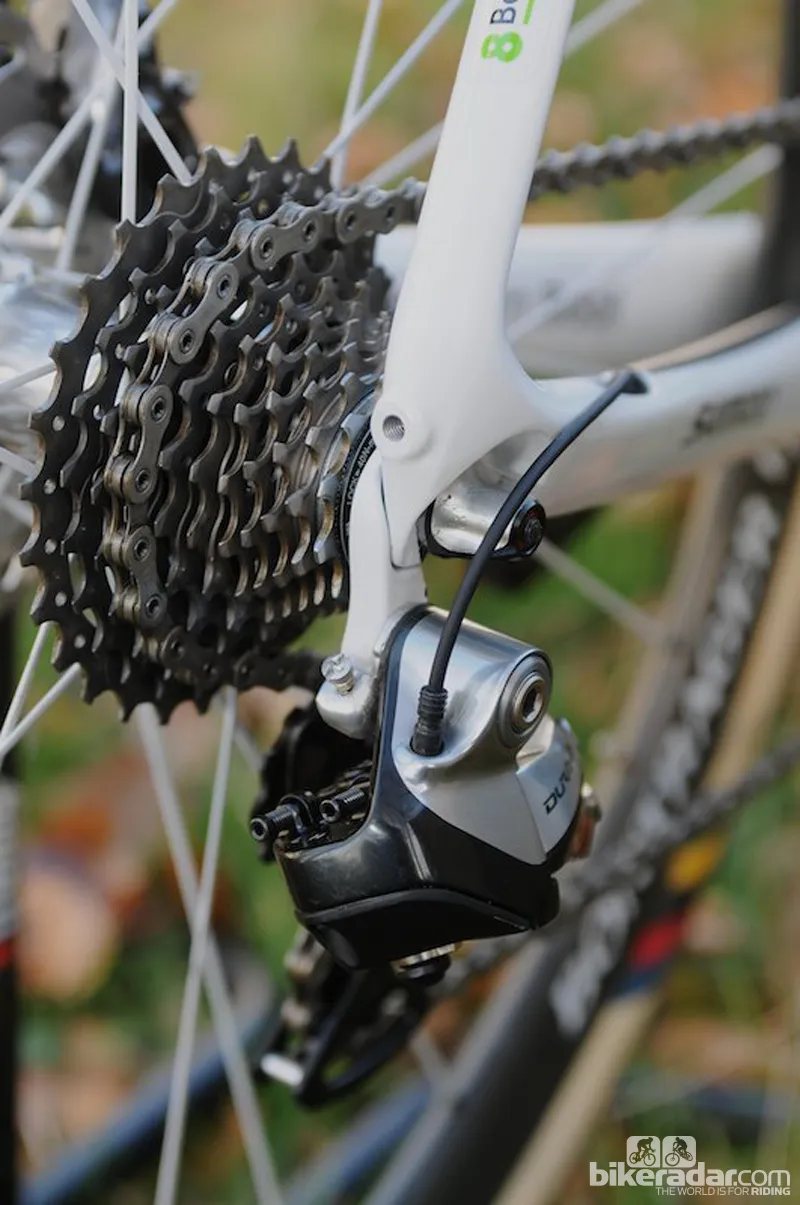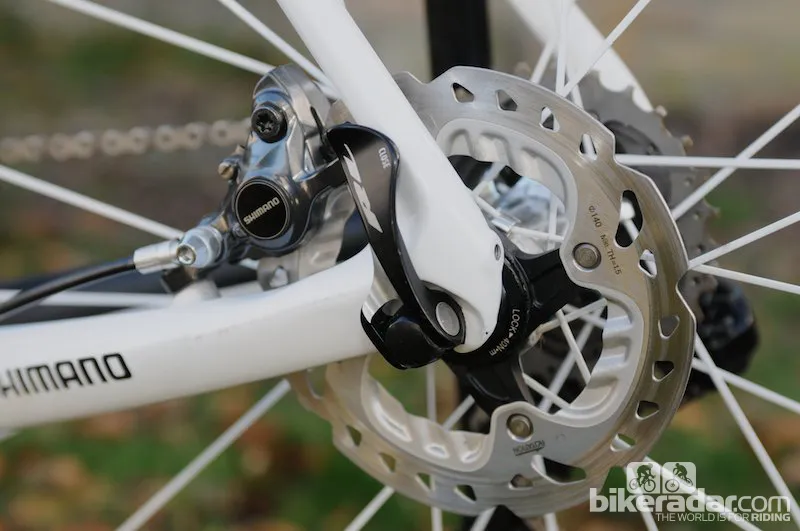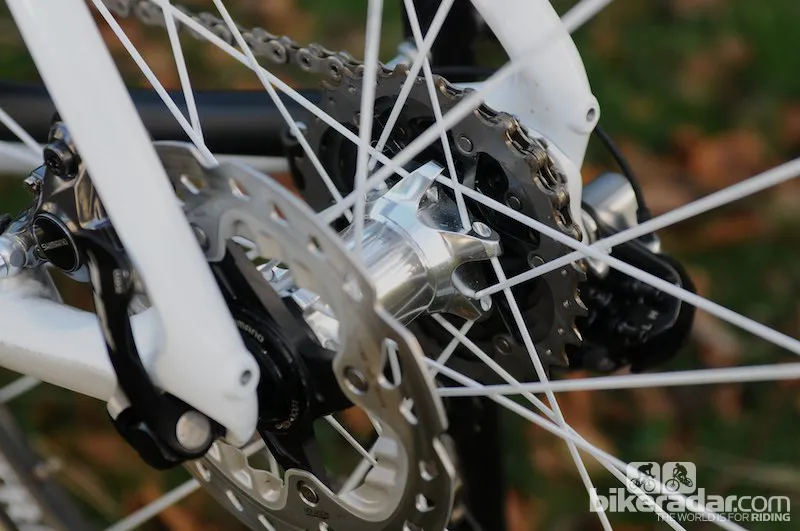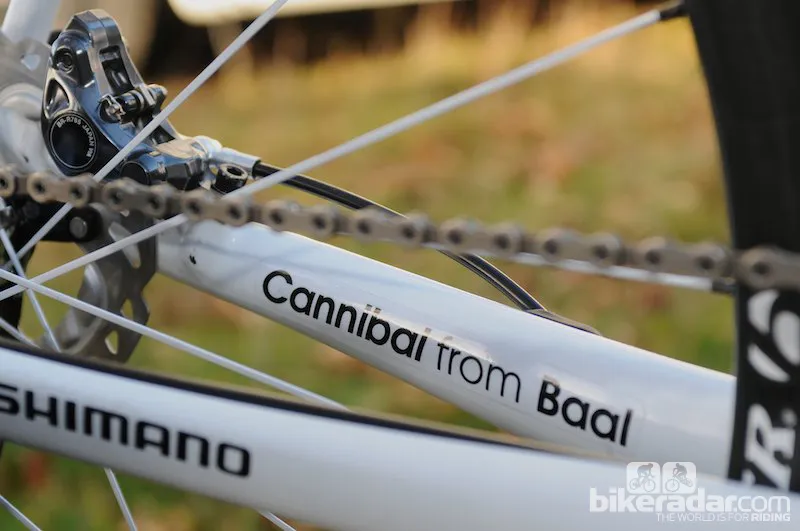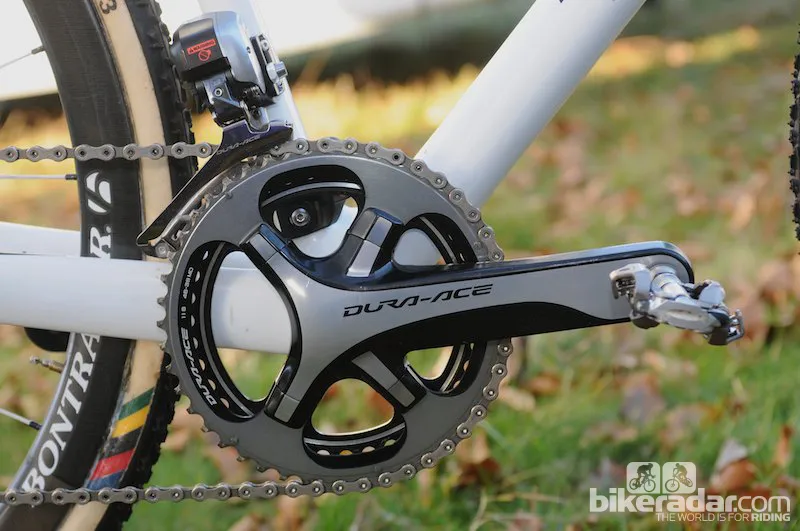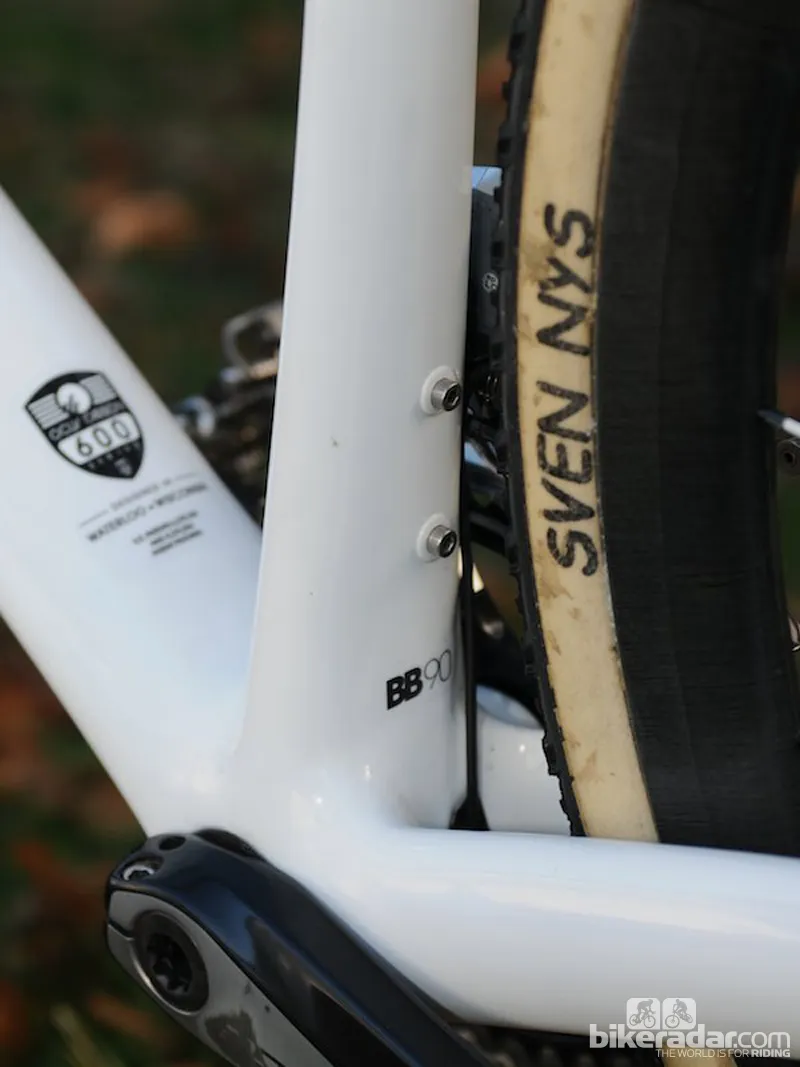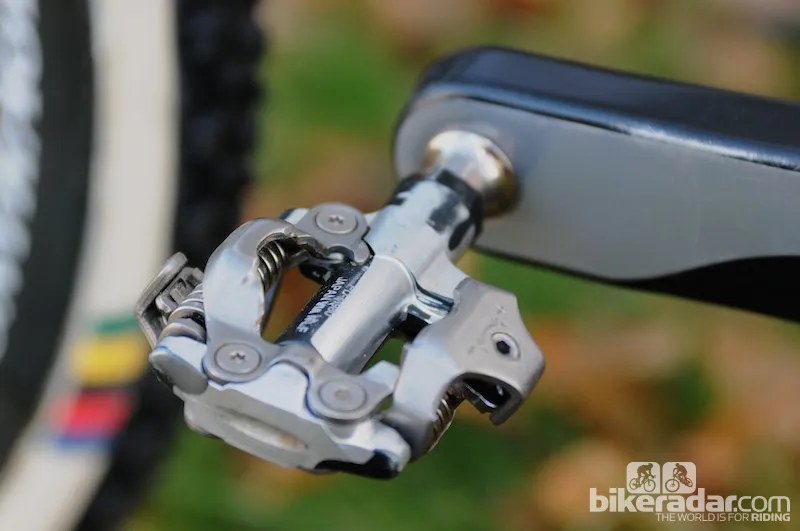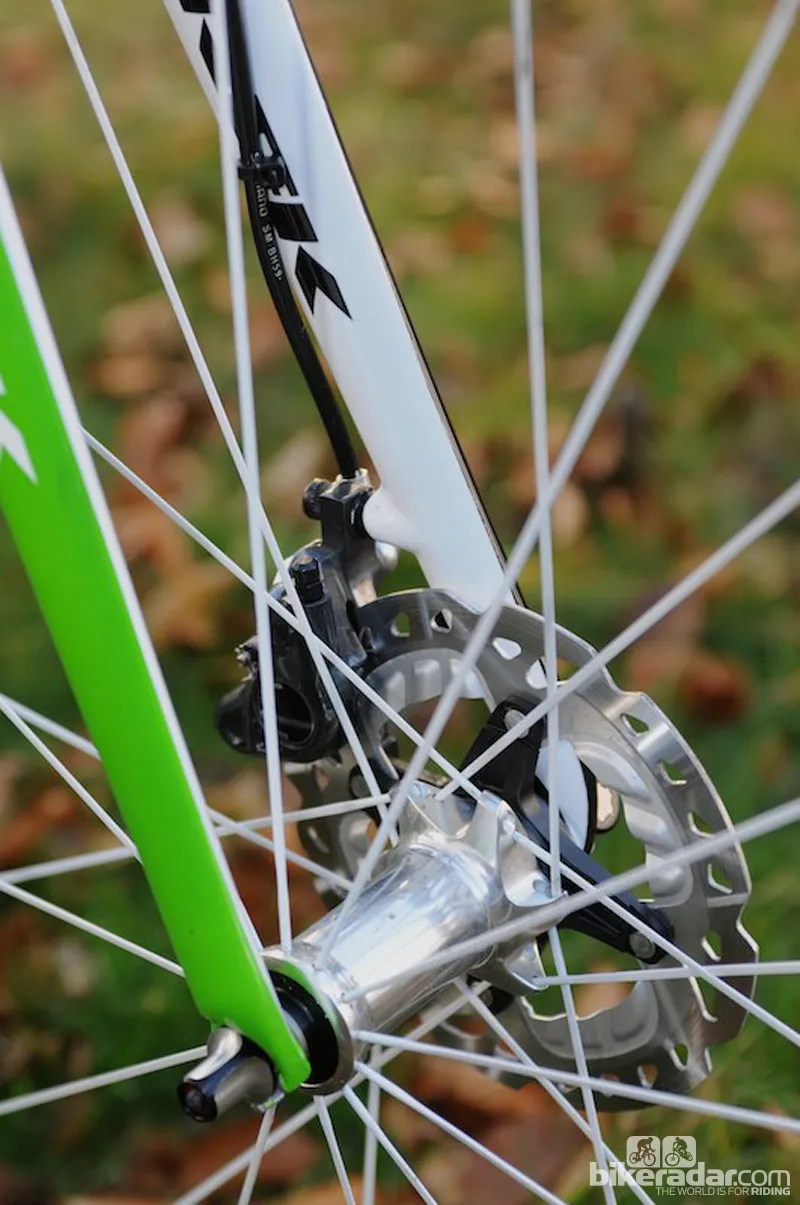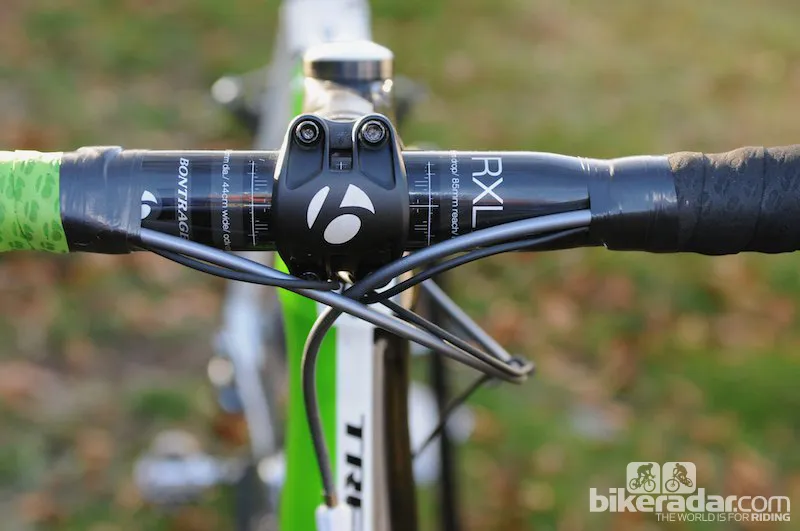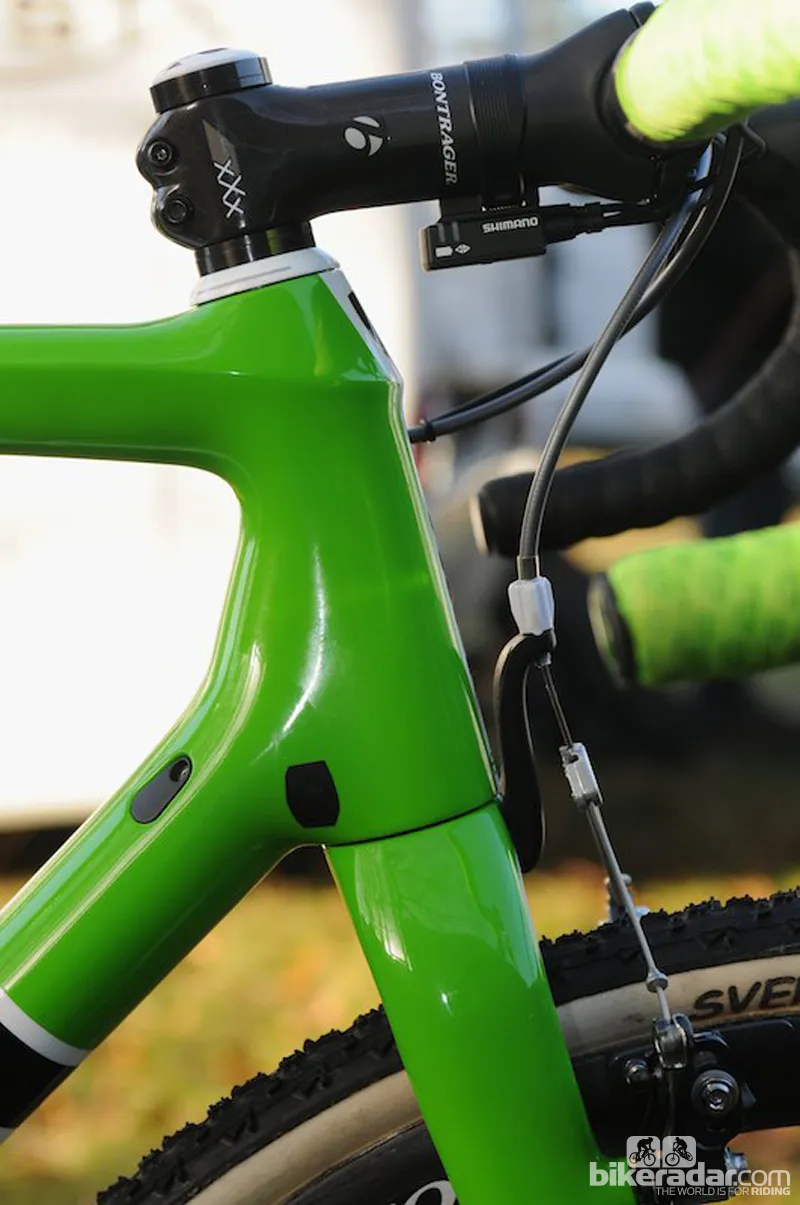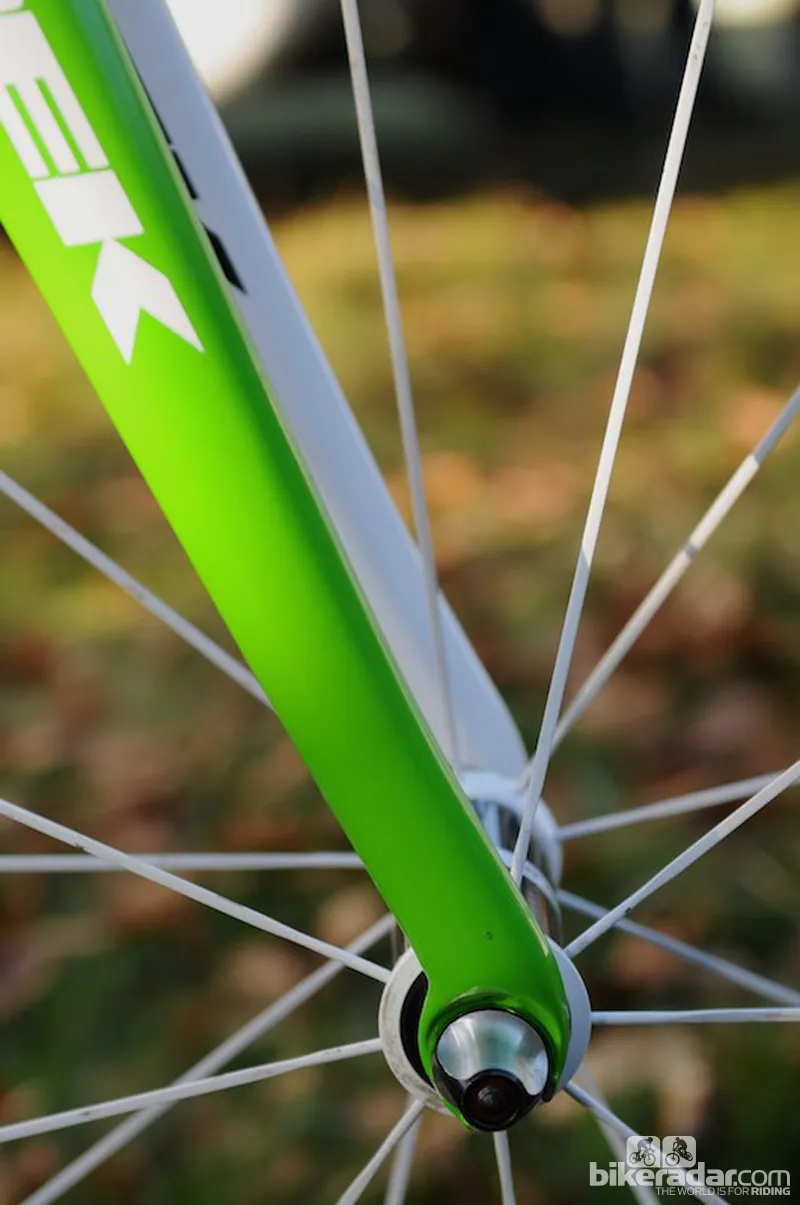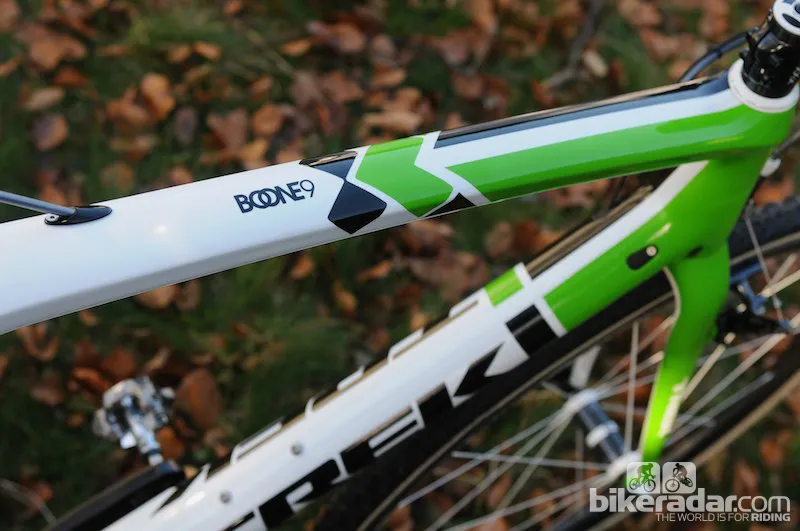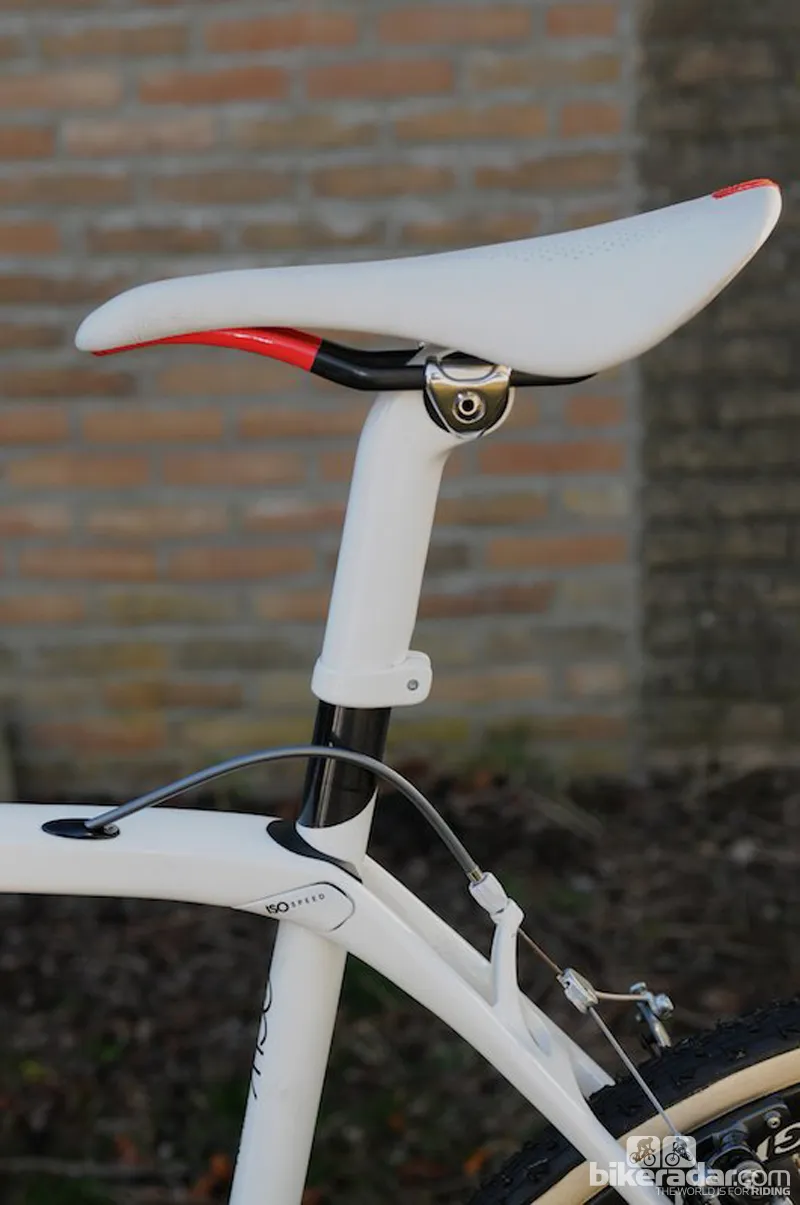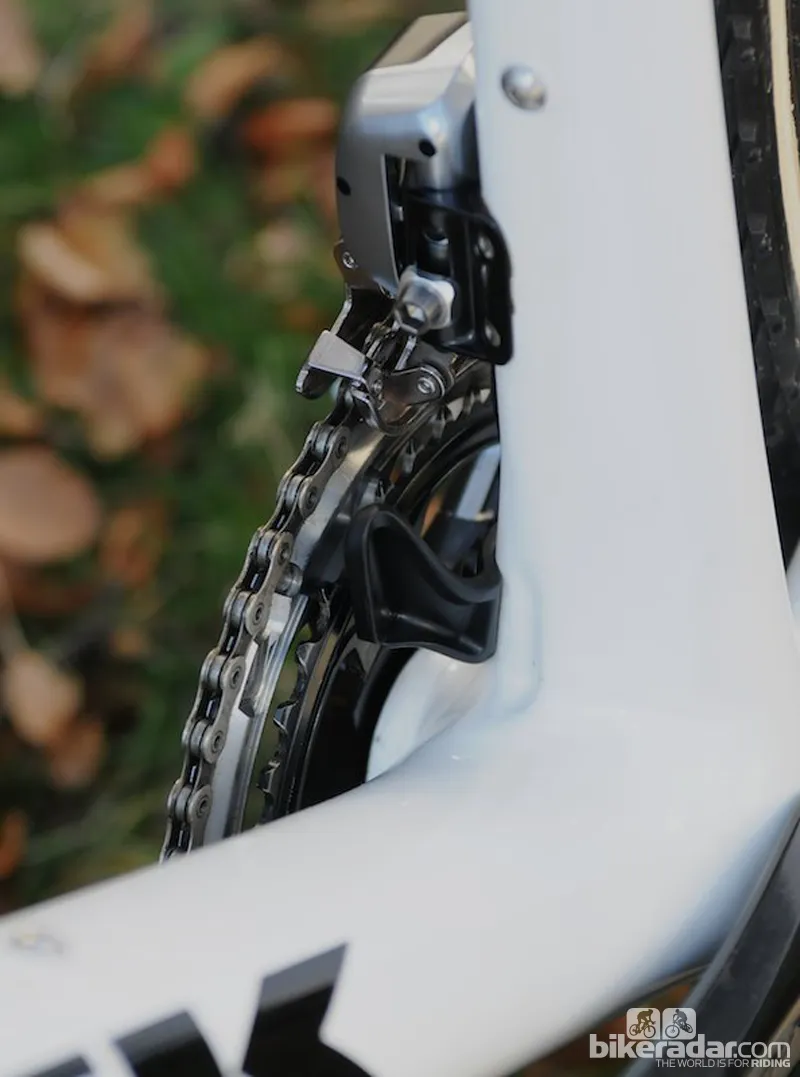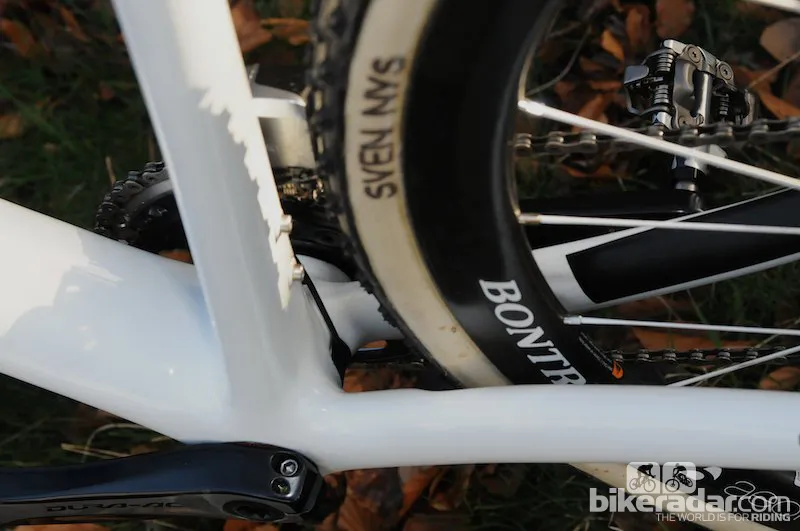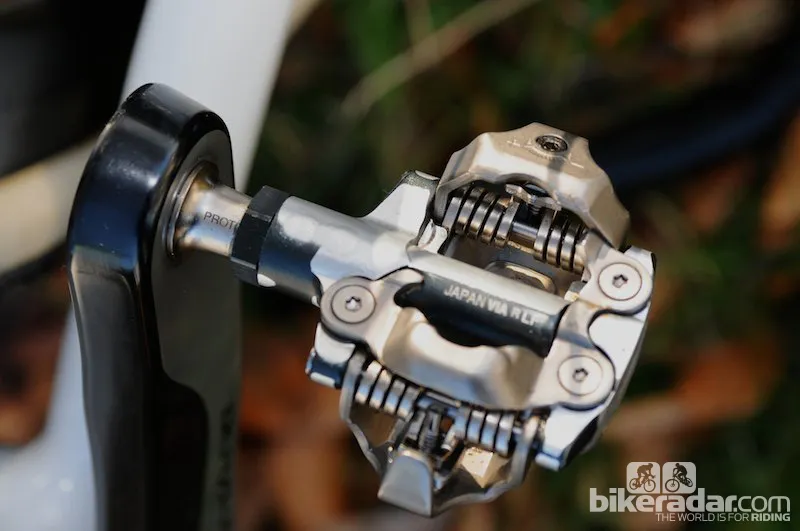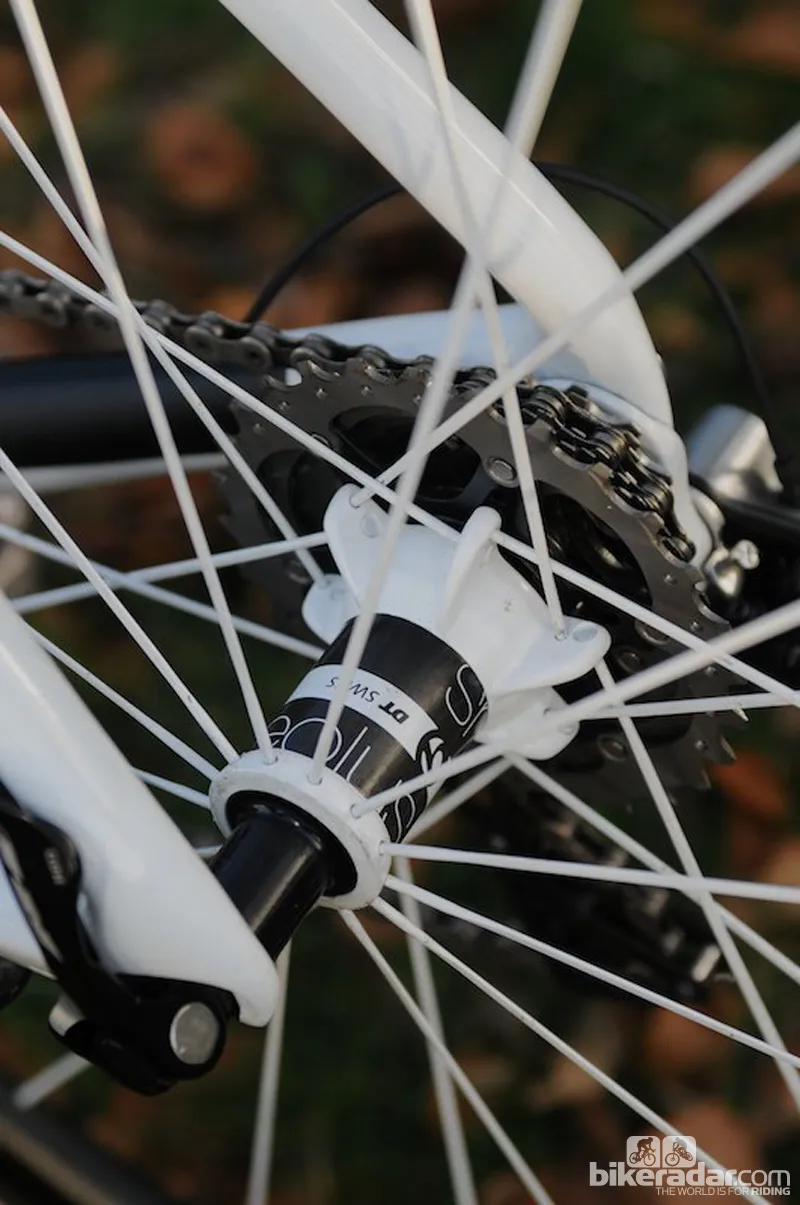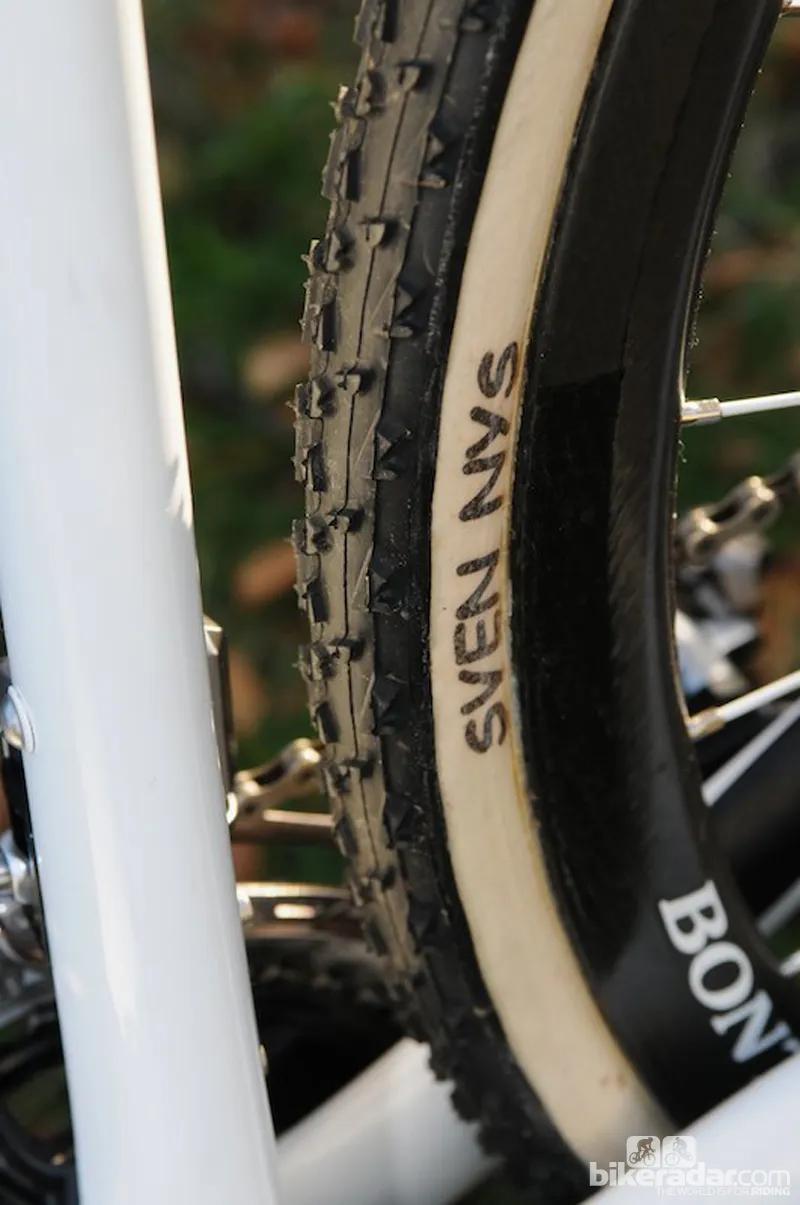One out of two isn’t bad. After we featured Marianne Vos’ bike before she rode it to victory in the Elite Women’s World Championships, we wondered if our presence might do the same for Sven Nys in the Elite Men’s race. Alas, it wasn’t to be, even though for much of the race Nys looked to have the edge, a small mistake on the final lap allowed Zdenek Stybar to escape to his third title.
Since becoming a Trek sponsored rider at the start of the year, there has been plenty of interest in Sven Nys' new Trek Boone ’cross machine (see our first ride review here). On his first outing, Nys won aboard the disc version. He’s since almost exclusively used the cantilever model, so we were torn trying to decide which to feature here. Thanks to arriving early, and some helpful mechanics, we decided to go for two out of two, so here are both Boones to compare and contrast.
Trek Boone 9 disc
First up, the Boone 9 disc, which maintains the same frame geometry and shaping as the non-disc version, but obviously with different brakes. The frame is an evolution of the excellent Domane road frame, taking the IsoSpeed fork and frame decoupler designs, and adding some tyre clearance. The fork uses a conventional looking curved shape, but continues the curve slightly forward of the dropout, which is tucked in underneath, creating a small amount of extra shock absorption and stability. The steerer tube has a 1.5” lower bearing, tapering to 1 1/8”, turning inside Trek’s E2 geometry head tube, which offers a less aggressive position that is ideal for cyclocross. Although outwardly similar, the disc bike’s fork will be substantially strengthened around the calliper mounting, a weight increase possibly offset by omitting the cantilever post mounts.
The innovative IsoSpeed seat tube decoupler would be easy to overlook on this bike, but on the road the huge amount of extra flex and comfort it generates over rough surfaces is mind-blowing, and it must surely increase the ability to continue to pedal more effectively when the ground is bumpy off road too. Whether it's a clear advantage is impossible to say, but we’re sure it’s no disadvantage, especially when combined with possibly the sport’s finest technician.

Out back, there’s no need for a brake bridge, and so the seat stays remain independent of each other until the seat tube, removing a potential clogging point. The rear disc calliper is neatly tucked in between the stays, and Trek has retained another feature that adds practicality, namely the hidden fender mounts on the fork and rear dropouts. With double bottle bosses and convertible cable routing, the Boone has potential to be as versatile as you could wish. There’s also the built in, adjustable chain catcher, sitting unobtrusively against the base of the seat tube to hopefully prevent chain jams.
But this is Sven’s race bike, and he has remained with Shimano components, using the company’s R785 Di2 hydraulic shifters here, matched with Dura-Ace Di2 derailleurs, and a Dura Ace chainset with 39/46 rings spinning in a BB90 bottom bracket and turning an 11-28t cassette. The workmanlike setup is completed with some Shimano M980 pedals, which, like those of other riders we’ve seen, appear to have had some of the surface coating lightly filed or sanded away, leaving a shiny, bare finish. Whether this is to gain some extra mud clearance, no one would let on.
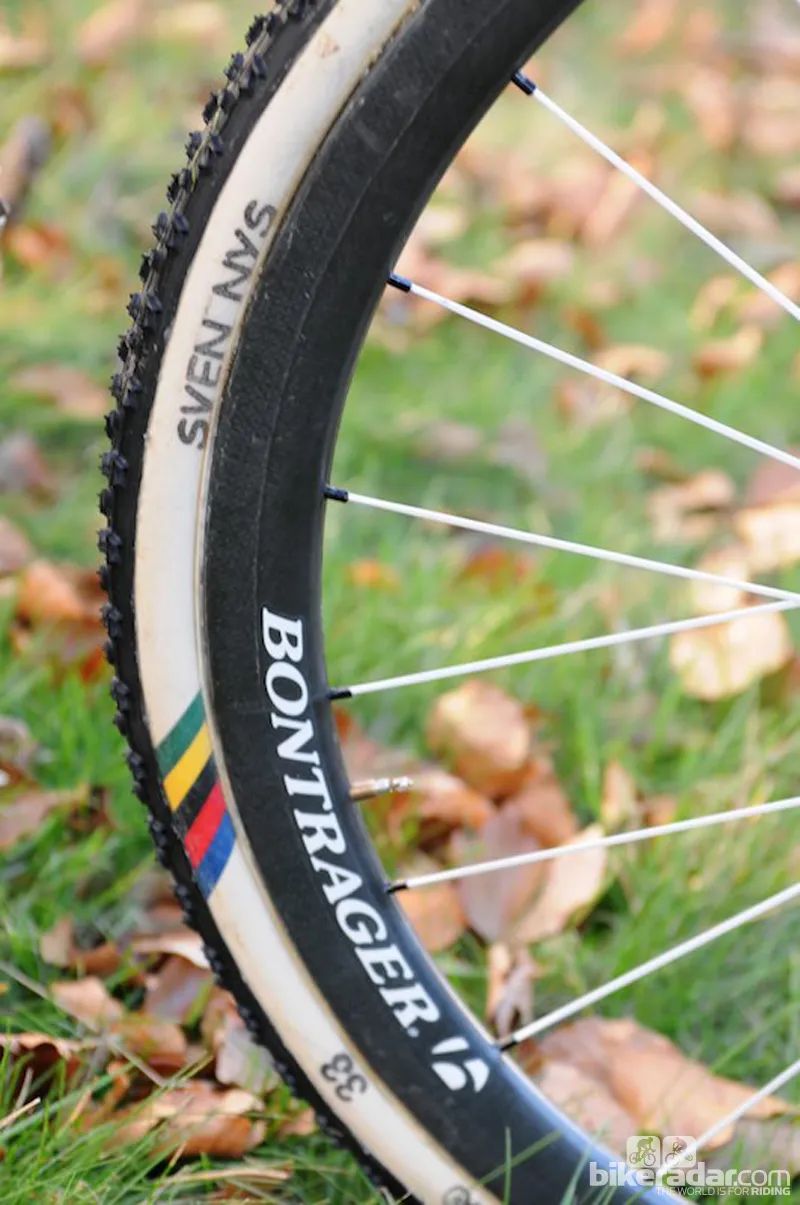
Bontrager continues its relationship with DT Swiss, with the disc version of the Aeolus 3 wheels. The shiny, polished hubs bear no branding, but closely resemble other DT Swiss units, and are designed with 24 holes front and rear, which is a minimum requirement for disc brakes. While laced two-cross at the back, the front wheel uses radial spokes on the non-disc side. The Bontrager tubular carbon rims are 35mm in depth, and wider than average, with external nipples for ease of maintenance.
Tyre choice for the World Championships was simplified following Saturday morning’s rain, as even though the course did dry considerably, the sections that were still wet and muddy were too sticky and deeply rutted through soft mud for anything other than a mud tyre. Sven had these brand new customised 33mm Dugast Rhinos with rainbow stripes and his name on the sidewall, which his mechanic estimated he’d race at 1.35 bar front and rear – that’s 19.5psi – for a 71kg rider.
Bontrager supplies the finishing kit, a 120mm XXX aluminium stem clamping the 44cm RXL IsoZone carbon bars, which have gel strips recessed in to them under the main hand holds for increased vibration reduction, along with Bontrager’s cork tape, applied in green and black to match the colours on each side of the front end. The seat post is Trek’s Ride Tuned seatmast, which cleverly avoids the need for cutting by having an externally sliding post slotted over the frame’s extended seat tube. It’s available in different lengths, with the added bonus of sealing the seat tube against dirt ingress, and clamps Sven’s preferred carbon-railed Bontrager Serano RXL saddle.
This 56cm bike is no sized-down special, but a well-fitted tool for a job, so we were impressed by a total weight, as pictured, of 7.75kg / 17.08lb (56cm), which compares very favourably with Marianne Vos’s much smaller bike with a nearly identical drivetrain. Even though the disc bike has been raced less, the fact that it’s here, and Nys has it in his arsenal is a sign of things to come.
Trek Boone 9 cantilever
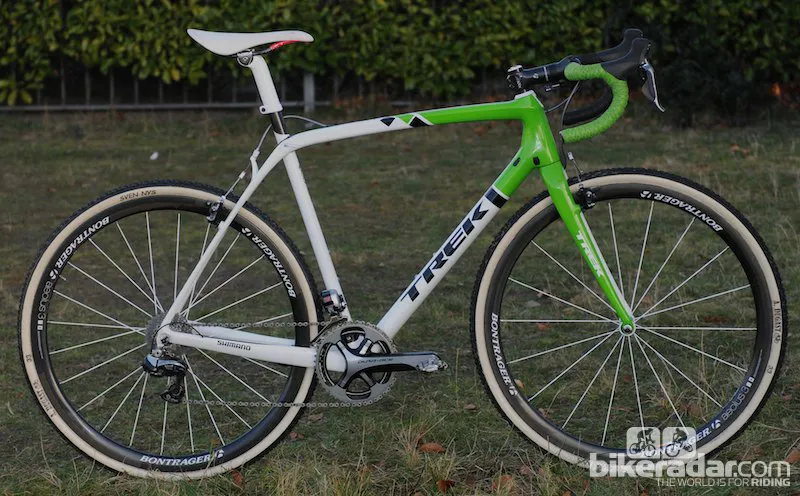
As expected, Nys chose to race the cantilever version of the Boone 9 for the Worlds, bringing three of them along with two disc versions, and a whole lot of wheels and tyres. The cantilever bike is outwardly very similar, sharing the frame geometry, but dispensing with the disc calliper mounts and necessary frame reinforcements they require. It also gains a fork crown mounted front brake cable hanger, which should prevent fork judder under braking, and at the back there’s a bridge to brace the stays against the braking force, and a cable hanger mounted above that, but the universal cable routing is the same.
Shimano’s CX70 cantlievers have great adjustment and an attractive minimal design, and are controlled by Dura-Ace Di2 levers, keeping identical shifting across the bikes. The drivetrain too is understandably identical, with the same chainset, mechs, cassette and pedals, although the chains were a CN9000 on the canti bike, and a Dura Ace ON9000 on the disc machine.
The wheels have similar looking Bontrager carbon tubular rims, but with a braking track included, and 24 holes at the rear and 18 up front. These are laced in a more common pattern, radial at the front, and two cross on the rear drive side, with radial spokes on the other. Hubs are DT Swiss Aeolus, with straight pull bladed white DT Swiss spokes holding it all together. Tyre choice was Dugast Rhino again.
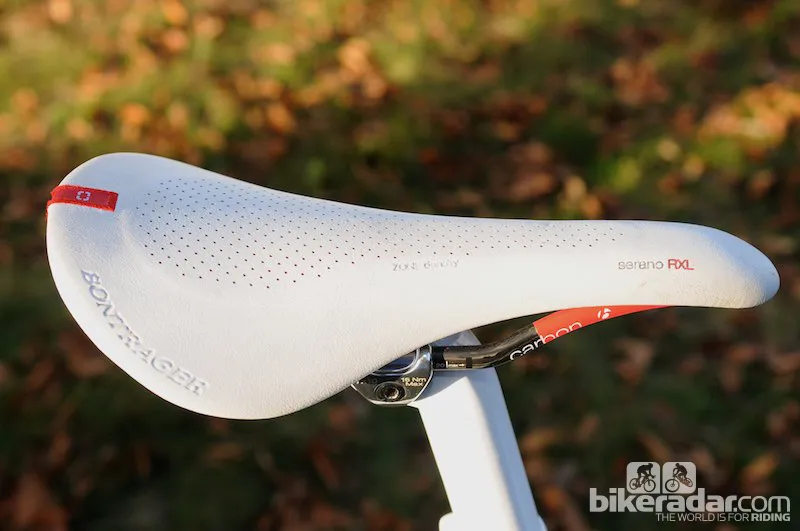
Identical Bontrager finishing kit tops the bike off, although the Ride Tuned seatmast fitted on this bike is 40mm shorter than that on the disc bike we measured. There is sufficient adjustment there that it doesn’t matter, and all it means is more of the seat post is exposed. Whether the white Serano saddle was fitted deliberately to differentiate between disc and canti bikes in a hurry, we can’t be sure, and although this frame doesn’t feature the world champion’s rainbow bands, as the disc bike does, at least one of the canti bikes he raced did.
Regarding the performance of the Boone, Nys finds it far more stable generally, and more predictable in the corners than his old Colnago. Where before his front hub was hidden behind the handlebars when he was in the saddle, now he can see it ahead of them, suggesting that the 72 degree head angle is more relaxed, and the 102cm wheelbase longer than his previous machines.
It was no surprise to find that the cantilever-equipped bike was lighter, at just 7.17kg/15.8lb, which is very impressive when allowing for Di2, pedals and mud tyres, meaning a sub 7kg weight would easily be achievable. Sven had stated before coming to Trek that the added weight of his disc bike was still too much, but now the difference is under 600g, and will decrease in time, it will be interesting to see what happens throughout the next season. What are the chances of a Belgian Champion themed bike, now the World title has escaped?
Complete bike specifications
Sven Nys's Trek Boone 9 Disc
- Frame: Trek Boone 9 disc
- Fork: Trek IsoSpeed Cross carbon disc, E2
- Headset: Cane Creek
- Stem: Bontrager XXX 120mm
- Handlebar: Bontrager RXL Isozone 44mm, 125mm drop, 85mm reach
- Tape: Bontrager cork, black and green
- Front brake: Shimano BR-R785 hydraulic caliper, RT99-SS 140mm rotor
- Rear brake: Shimano BR-R785 hydraulic caliper, RT99-SS 140mm rotor
- Brake levers: Shimano ST-R785 Di2 hydraulic
- Front mech: Shimano Dura-Ace Di2 9070
- Rear mech: Shimano Dura-Ace Di2 9070
- Shift levers: Shimano ST-R785 Di2 hydraulic
- Cassette: Shimano Dura-Ace 6900 11-28 11 speed
- Chain: Shimano Dura-Ace HG ON9000 11 speed
- Crankset: Shimano Dura-Ace 9000, 172.5mm cranks with 39/46 rings
- Bottom bracket: Shimano BB90
- Pedals: Shimano PD M980
- Rims: Bontrager Aeolus 3, 24 hole
- Front hub: DT Swiss disc
- Rear hub: DT Swiss disc
- Spokes: DT Swiss straight pull, white
- Front tyre: Dugast Rhino 33mm 1.35 bar
- Rear tye: Dugast Rhino 33mm 1.35 bar
- Saddle: Bontrager Serano RXL with carbon rails
- Seatpost: Trek Boone Ride Tuned carbon post
Critical measurements
- Height: 1.82m / 5'11 1/2"
- Weight: 71kg / 156.5lb
- Saddle height BB centre to top: 765mm
- Saddle setback: 60mm
- Seat tube centre to top: 533mm
- Seat tube centre to centre: 510mm
- Saddle to bar centre: 572mm
- Saddle to bar drop: 105mm
- Head tube length: 157mm
- Top tube length: 558mm actual
- Total weight: 7.75kg/17.08lb
Sven Nys's Trek Boone 9 cantilever
- Frame: Trek Boone 9
- Fork: Trek Boone 9
- Headset: Cane Creek
- Stem: Bontrager XXX 120mm
- Handlebar: Bontrager RXL Isozone 44mm, 125mm drop, 85mm reach
- Tape: Bontrager cork, black and green
- Front brake: Shimano CX70
- Rear brake: Shimano CX70
- Brake levers: Shimano Dura-Ace Di2 9070
- Front mech: Shimano Dura-Ace Di2 9070
- Rear mech: Shimano Dura-Ace Di2 9070
- Shift levers: Shimano Dura-Ace Di2 9070
- Cassette: Shimano Dura-Ace 6900 11-28 11 speed
- Chain: Shimano Dura-Ace HG CN9000 11 speed
- Crankset: Shimano Dura-Ace 9000, 172.5mm cranks with 39/46 rings
- Bottom bracket: Shimano BB90
- Pedals: Shimano PD M980
- Rims: Bontrager Aeolus 3, 24 hole rear, 18 hole front
- Front hub: DT Swiss Aeolus
- Rear hub: DT Swiss Aeolus
- Spokes: DT Swiss straight pull, white
- Front tyre: Dugast Rhino 33mm 1.35 bar
- Rear tye: Dugast Rhino 33mm 1.35 bar
- Saddle: Bontrager Serano RXL with carbon rails
- Seatpost: Trek Boone Ride Tuned carbon post
Critical measurements
- Height: 1.82m/5'11 1/2"
- Weight: 71kg/156.5lb
- Saddle height BB centre to top: 765mm
- Saddle setback: 60mm
- Seat tube centre to top: 533mm
- Seat tube centre to centre: 510mm
- Saddle to bar centre: 572mm
- Saddle to bar drop: 105mm
- Head tube length: 157mm
- Top tube length: 558mm actual
- Total weight: 7.17kg/15.8lb
